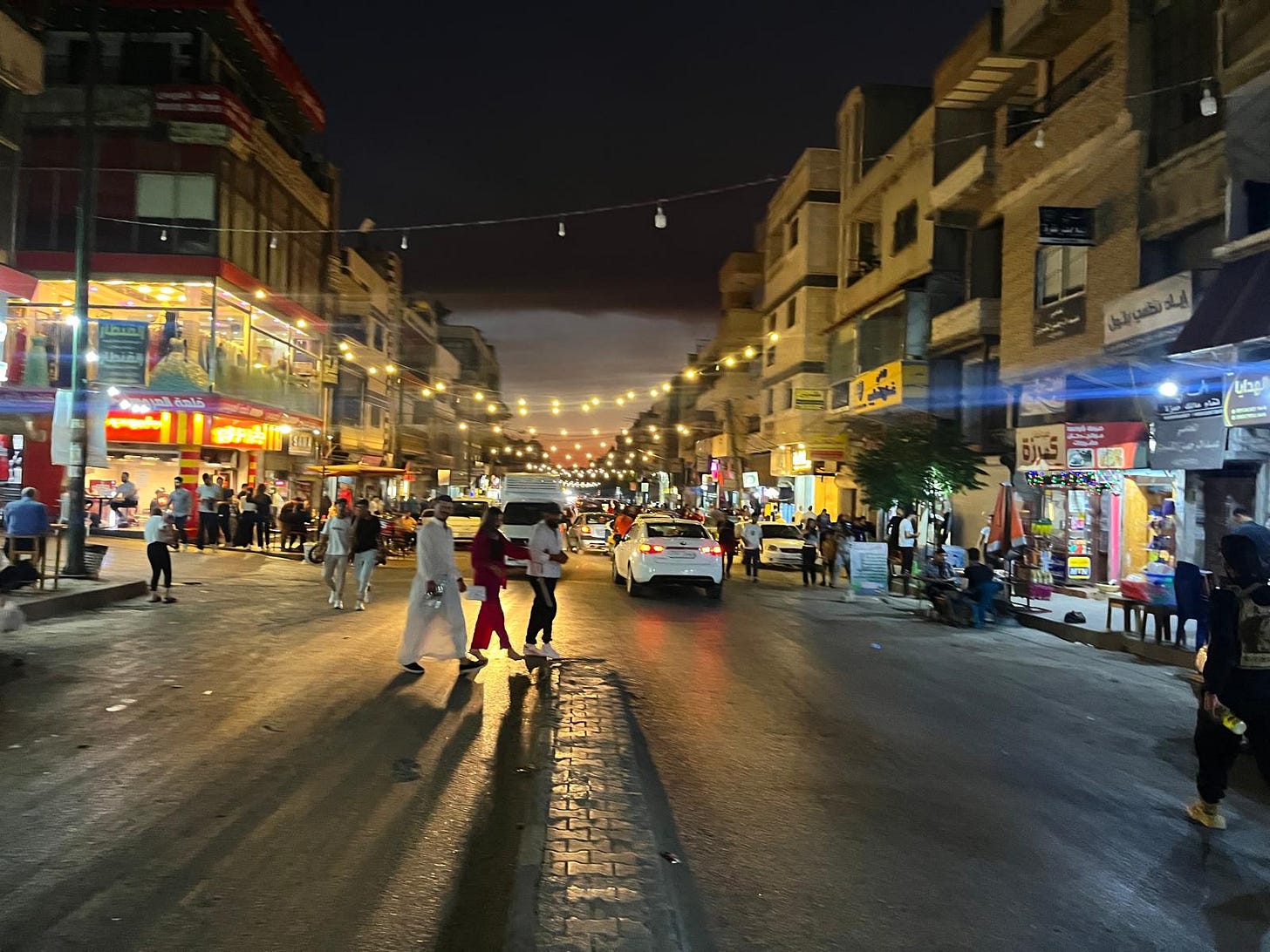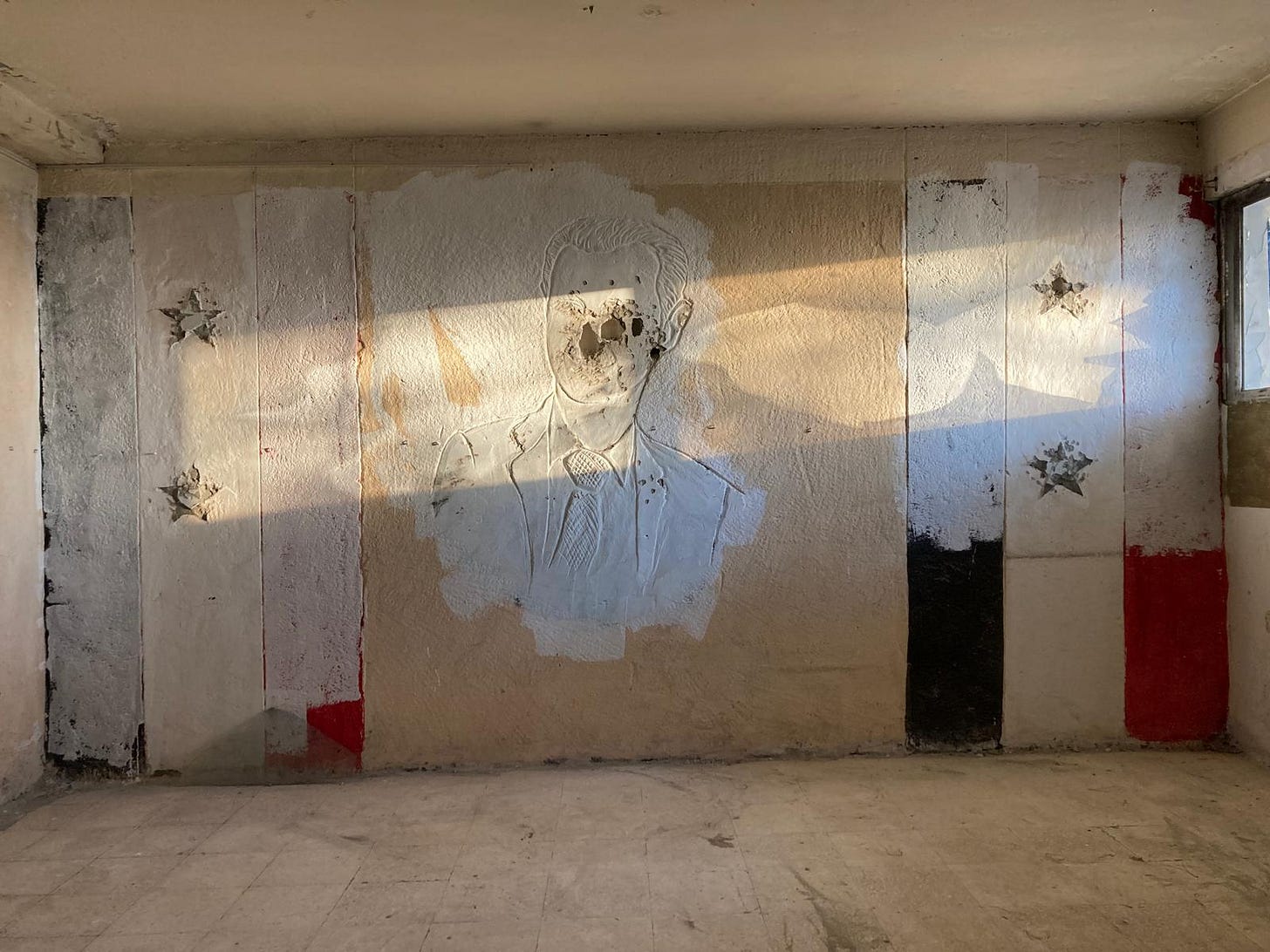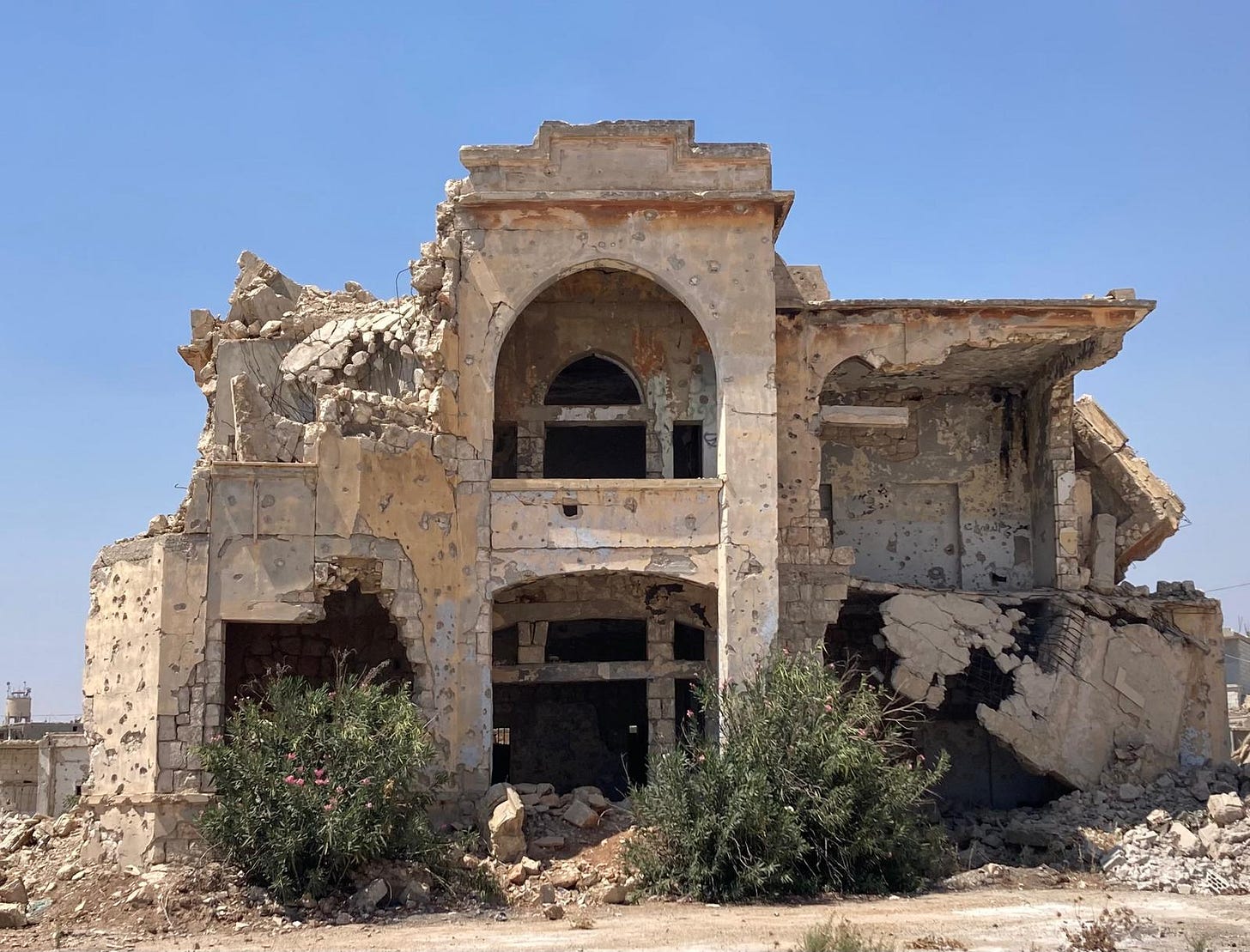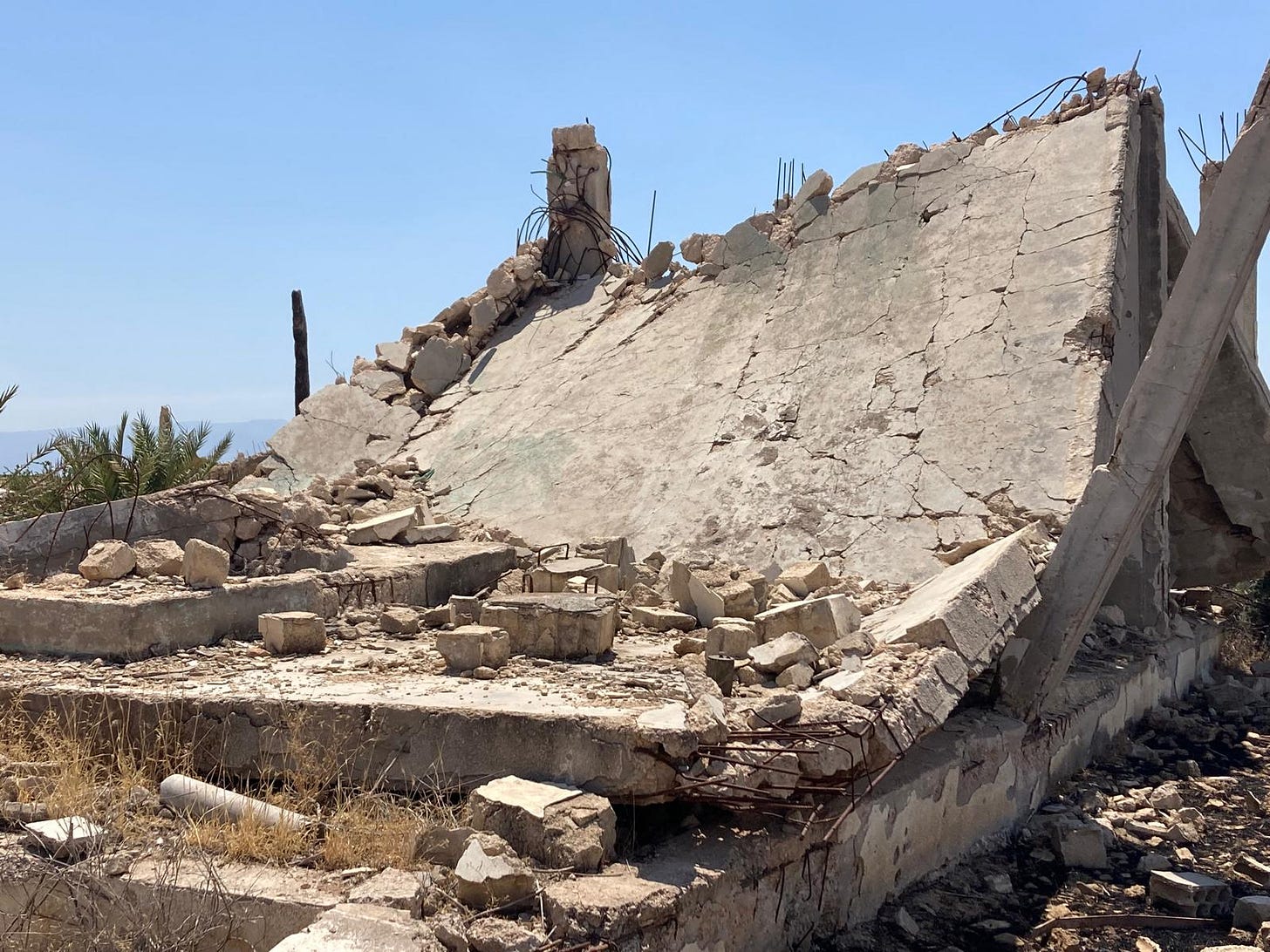I just finished another two weeks in Syria, visiting Homs City and Jabal Zawiyah for the first times and revisiting Hama, Latakia, and Tartous. I met with local officials, religious leaders, security members and activists to discuss a range of topics. I will of course publish more in depth articles on these issues in the coming weeks, but I want to highlight the main trends I’ve seen in this short post. In short, there has been real progress in key sectors, but there are also some worrying trends that must be addressed to prevent larger issues down the road.
Substantive Security Reforms
There have been some genuine and good reforms within the new government’s internal security (Ministry of Interior) and military (Ministry of Defense) that have begun to pay off these past two to three months. New accountability mechanisms have been introduced and are actively working, engaging both security officials and, crucially, local civil society networks.
The MoI also completed an extensive internal review around February or March after which it dismissed, promoted, and moved officers based on their performance. This seems to have significantly improved issues of security force violations in some areas, especially Homs City. A key part of recent MoI reforms has been moving and promoting security officials with good track records to more sensitive areas or more powerful positions. These changes have also seen the promotion of some non-Sunni officials (though seemingly men with historic links to Idlib).

MoD integration of factions has continued, with clear results on the ground. Checkpoints now appear more unified, operating under one coherent unit rather than a collection of small disparate groups. MoD internal accountability has likewise accelerated over the past two months.
Despite these changes, the overall lack of transparency from local officials continues to plague security-civilian trust building. While no one I met with accuses the security forces of being behind systemic violations anymore (compared to what was happening in Homs during the first two months after liberation, for example), there is little faith that these new accountability mechanisms are genuine. Among Alawites in particular, the common narrative is that detained criminals - whether Sunni civilians or security members - are quickly released after arrest. The government’s lack of transparency on judicial proceedings and punishments for these criminals fuels rumored sightings of detained men just days after their arrest.
Local Officials and Civil Society
There are likewise continued improvements in some regional governance structures. Improved conditions follow two factors: competent and proactive local officials, and organized and cooperative civil society. The relationships between these two sides takes time to develop, but where local officials and civil society have been open to building trust, real improvements can be seen.
However, there are still regions where either local officials are far too controlling and thus continually sidelining important civil society networks, and other areas where civil society networks remain too weak and afraid to engage with officials who might otherwise be open to them. In many of these cases, local administrative and security officials engage directly with mukhtars and sheikhs at the expense of civilian networks.
The Homs Dichotomy
The above two topics have both had significant impacts in Homs City in particular. There is a strange dichotomy to Homs where the social media coverage of the city has created an image of chaos and violence, while life on the ground seems to have ‘normalized’ significantly in recent months. Most importantly, nightlife has returned to many neighborhoods - including Alawite and Shia neighborhoods - with commercial streets remaining packed with shoppers and families well into the night.
The General Security’s defense of Alawite neighborhoods on March 6 was a turning point for the city. Locals and Alawite leaders I met with cited that moment has being crucial for starting to build trust with local officials. The type of security force-driven violations the city endured in December and January have also ended, in large part due to the aforementioned reorganization of officials and new accountability mechanisms, which has further strengthened trust. Local security officials and senior political officials now work closely with religious figures from all sects, and neighborhood mukhtars play a key role as intermediaries.
However, there are ongoing sectarian issues now driven by Sunnis who refuse to use the security and legal systems to address past violations by specific Alawites, and from Sunni extremists. Many crimes seem to be linked to some specific personal issue (often along sectarian lines given the nature of the war), but in neighborhoods with small Alawite minorities, some Sunni extremists continue to use harassment, kidnapping, and violence to seize Alawite homes. The local government’s struggle to contain these problems is emblematic of the government’s broader inability to contain the populist Sunni street after March 6.
The Threat of a New Insurgency
The debate around the “remnants” and threat they pose after March 6 is extremely muddled. It is difficult to get a clear understanding of just how dangerous insurgents are today, and to what extent they enjoy the level of popular support they had in the weeks leading up to March 6. Both security officials and Alawite activists have presented conflicting narratives of the conditions in the coast; generally, however, it seems that popular support is greatly diminished in Tartous governorate and still remains largely non-existent in Homs and Hama.
Latakia remains a significant question mark. However, it is important to highlight that even in just the past two months there has been major improvements in security positions across the coast: units have been consolidated smoothing the local command chain, strategic points have been hardened, and security officials have engaged local communities extensively. If there is another attempt at a coordinated, widespread uprising, it is unlikely to achieve anywhere near the kind of initial military gains that it saw on March 6, when insurgents were able to kill or expel most General Security positions across the coast.
One of the most important factors for the strength of any future insurgency is the status of those Alawite soldiers who went through taswiya, after December 8. By far the most common complaint I have heard from Alawites across Syria since May has been the lack of movement on this issue: ex-soldiers stuck with temporary IDs that clearly identify them as having been soldiers while the new government continues delaying the hand out of new civilian IDs. Many of these men are too terrified to leave their homes now, convinced they will be killed or detained at checkpoints - or at the very least severely harassed. This has kept them from rejoining the workforce while also making them wholly reliant on their wives and parents for bringing them anything from the outside world. Some Alawite activists and leaders have expressed concerns that these men, bereft of any opportunities, may take up arms and turn to criminality or the insurgents.
IDP Returns
It goes without saying that much of Homs City, northern Hama, southern Idlib, and northern Latakia remain in ruins. Every single home has been destroyed starting from the Sunni villages just north of Suqaylabiyah through the entire Jabal Zawiyah region of Idlib and all 40 villages in Latakia’s Jabal Akrad. Reconstruction is done on an individual basis relying on personal funds or charities. In Jabal Akrad, small numbers of displaced Sunnis and Christians have begun to return and rebuild, but the region has no working water lines, and its remote villages and treacherous roads make critical service provision significantly more challenging than in southern Idlib.
Mines and unexploded ordinance is likewise a continual life and death issue. In the village of Hamamiyat in northern Hama a few men have returned to try and reestablish their farms. They use an excavator to search for mines and rockets, just meters away from their flattened homes in which the regime has placed additional mines and tripwires. There is no support for their work, as the government’s singular de-mining vehicle battalion is overstretched in operations across the country.
Recording the Revolution
On a lighter note, the fall of Assad and the end of the war has made it far easier to meet activists and revolutionaries from every community across the country and record their stories. Travel to any town and ask around and you will find FSA commanders and protest organizers who will happily recount the early years of the revolution. As a personal project I have been recording these histories - both via interviews and reviewing old videos and Facebook posts - for the past two years. Keep an eye out for some more of these local histories published here and elsewhere in the coming weeks.
If you enjoy my coverage of these topics, consider becoming a paid subscriber. All of my fieldwork is self-funded, so any support from my readers goes a long way to continuing this research.




